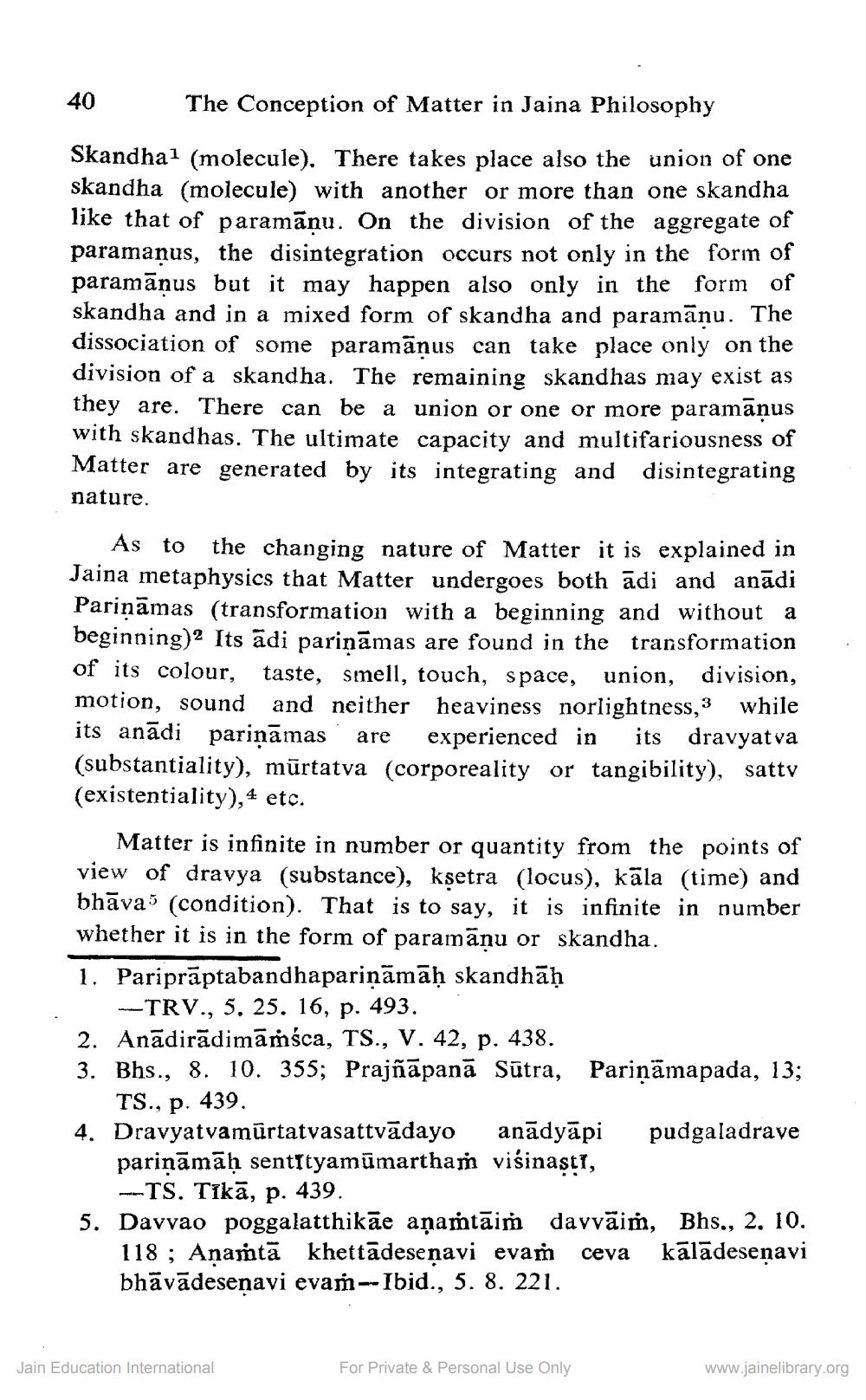________________
40
The Conception of Matter in Jaina Philosophy
Skandhal (molecule). There takes place also the union of one skandha (molecule) with another or more than one skandha like that of paramāņu. On the division of the aggregate of paramaņus, the disintegration occurs not only in the form of paramānus but it may happen also only in the form of skandha and in a mixed form of skandha and paramānu. The dissociation of some paramānus can take place only on the division of a skandha. The remaining skandhas may exist as they are. There can be a union or one or more paramānus with skandhas. The ultimate capacity and multifariousness of Matter are generated by its integrating and disintegrating nature.
As to the changing nature of Matter it is explained in Jaina metaphysics that Matter undergoes both ādi and anādi Parināmas (transformation with a beginning and without a beginning)2 Its ādi parināmas are found in the transformation of its colour, taste, smell, touch, space, union, division, motion, sound and neither heaviness norlightness, 3 while its anādi parināmas are experienced in its dravyatva (substantiality), mūrtatva (corporeality or tangibility), sattv (existentiality),4 etc.
Matter is infinite in number or quantity from the points of view of dravya (substance), ksetra (locus), kāla (time) and bhāvas (condition). That is to say, it is infinite in number whether it is in the form of paramāņu or skandha. 1. Pariprāptabandhapariņāmāḥ skandhāḥ
--TRV., 5. 25. 16, p. 493. 2. Anādirādimāmsca, TS., V. 42, p. 438. 3. Bhs., 8. 10. 355; Prajñāpanā Sūtra, Parināmapada, 13;
TS., p. 439. 4. Dravyatvamūrtatvasattvādayo anādyāpi pudgaladrave
parināmāḥ sentityamūmartham višinasti,
--TS. Tikā, p. 439. 5. Davvao poggalatthikāe aṇamtāim davvāim, Bhs., 2. 10.
118 ; Anamtā khettādeseņavi evaṁ ceva kālādesenavi bhāvādesenavi evan--Ibid., 5. 8. 221.
Jain Education International
For Private & Personal Use Only
www.jainelibrary.org




